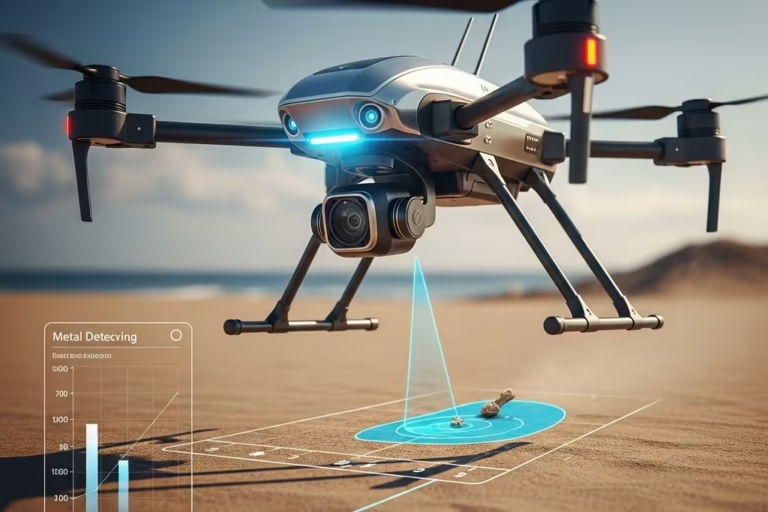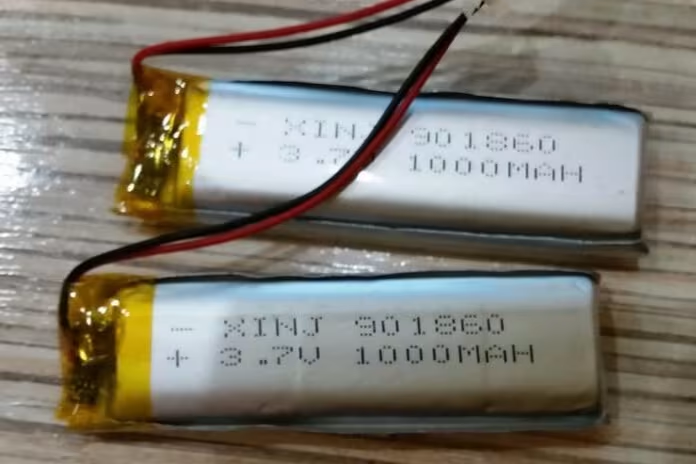Standing at the edge of an old battlefield in Eastern Europe last month, I watched as a small drone methodically swept across the landscape, its metal detection payload scanning for unexploded ordnance. Autonomous metal detection is changing not only how we search but also where we can search and what we can find.
The Evolution of Autonomous Metal Detector Systems
From early developments to the even more recent breakthroughs, it has all been a way up for autonomous metal detection systems. In comparison with the primitive, early attempts at automating the scanning with a simple motor, today’s autonomous platforms represent a quantum leap in capability. Modern systems integrate state-of-the-art robotics, advanced sensor arrays, and artificial intelligence in independently operating platforms within tough environmental conditions.
What really makes this evolution so interesting, though, is the way it has transformed the very paradigm of metal detection. Whereas the traditional method relied on human operators interpreting signals in real time, an autonomous system can process volumes of data side by side to pinpoint patterns and anomalies that may elude even the most experienced human operator.
Ground-Based Systems: The Workhorses of Autonomous Detection
Ground-based autonomous detection robots have proved to be very powerful tools for systematic site surveys, ranging from compact units for indoor usage to robust all-terrain vehicles intended for outdoor operations, both combining precise navigation capabilities with advanced metal detection technology.
I recently saw the capability of such a system mapping subsurface utilities from the ground during an industrial site survey. The velocity and spacing between successive sweep lines that this robot could maintain with simultaneous consideration for terrain variation produced a quality in the survey data never seen before. Consistency of this nature is simply impossible to achieve with conventional techniques.
Going Airborne: Metal Detector Drones

Drone-carried metal detectors probably represent the most dramatic advance in autonomous detection technology. Such systems can rapidly scan areas that it would be either very time-consuming or dangerous to cover on foot. By incorporating high-precision GPS, advanced flight control systems, and sophisticated metal detection technology, platforms have been created that can carry out detailed surveys while maintaining optimal height and coverage patterns.
Applications range far beyond simple scanning. In state-of-the-art drone systems, detailed 3D mappings of buried objects are possible, aided by AI algorithms that classify detected items by their signature characteristics. This is an especially valuable capability in humanitarian demining operations, where fast accurate survey data can reduce, sometimes dramatically, the time taken to clear areas.
The Technical Challenge of Integration
Setting up truly effective autonomous detection systems presents a number of very sophisticated technical challenges. Considering that the metal detection technology is integrated with robotic platforms, there is a need to consider electromagnetic interference from motors and control systems, influence of motion on the performance of sensors, and precise positioning and navigation.
Success requires sophisticated sensor fusion algorithms that can combine data from a range of sources, including metal detectors, GPS, inertial measurement units, and other environmental sensors, into good, usable information. In many ways, it is actually the development of these algorithms that represents the major technical accomplishment for this area. Applications Across Industries The applications of autonomous metal detection extend to many industries:
In the case of archaeology, autonomous systems are changing how sites are surveyed and documented through the possibility given for fast and systematic mapping of large areas, while AI-assisted analytics helps identify potential areas of interest for in-depth investigation.
Autonomous detection systems installed for subsurface utility mapping reduce the risks of accidental damages during excavation works in the construction industry. Most of the systems create detailed 3D maps of buried infrastructure that will help planners and engineers make more informed decisions about construction activities.
Environmental remediation projects benefit directly from the rapid, accurate site survey of metallic debris. Systematic coverage with autonomous systems ensures that nothing gets missed, while simultaneously reducing human exposure to potentially hazardous conditions.
The Role of Artificial Intelligence

Artificial intelligence is, therefore, central in modern autonomous detection systems. All these-machine learning algorithms that allow filtering out false positives, classifying the objects detected, and optimization of search patterns-enable accumulated data. Systems learn from each deployment and improve their capability to identify and classify targets with each passing moment.
Recently, I have been a part of a team that has developed AI algorithms for autonomous detection platforms. The system was amazingly able to distinguish between various types of metallic objects-even under poor soil conditions. This is just one example of the kind of intelligent discrimination now redefining how we go about all kinds of detection tasks.
Look to the Future: Swarm Technology and Beyond
Swarm technology-the principle of having multiple autonomous units collaborate in surveys to cover areas more quickly and thoroughly than any single unit can manage-apparently is the next frontier in autonomous metal detection. Trials so far with such swarm systems have turned in promising results, especially for large-scale survey operations.
Fully integrating a host of advanced sensor technologies, such as multi-spectral imaging and ground-penetrating radar, into truly autonomous metal detection platforms holds even greater promise. These hybrid systems will feature even more enhanced subsurface imaging capabilities that continue to help us understand what’s really under the ground.
Conclusion
The development of autonomous metal detection is one of the most fundamental paradigm shifts in how we address the problem of finding and characterizing buried metallic objects. As somebody who has witnessed these advancements firsthand, from early prototypes to the sophisticated systems deployed today, I can confidently say that the future of exploration is here. We are no longer limited by the constraints of human endurance or the dangers of hazardous environments. Instead, we are entering an era where intelligent machines work tirelessly and precisely, uncovering what was once hidden.

My name is Paul and I am the founder of Detector For Metal, a dedicated resource for metal detecting enthusiasts seeking to uncover historical treasures and connect with the past using the latest technology. As a stay-at-home dad and family man, I’ve found metal detecting to be the perfect hobby that combines family adventure with historical learnings for the whole family.
As a father, I’m deeply committed to passing on this hobby to the next generation of detectorists, starting with my own children. I share advice on everything from metal detecting with kids to exploring the top 10 metal detecting sites you never thought about. My methodical approach to the hobby goes beyond the thrill of discovery—it’s about creating family traditions while preserving history and sharing the stories of those who came before us.


